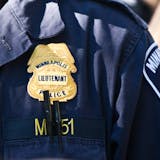Three weeks into distance learning, Lisa Terrell worried that her first-grade daughter Iris might not be able to stick it out in the Spanish immersion program at Minnetonka Public Schools.
Iris needed casual Spanish conversation, her mother said, and it wasn't happening in this new online world. Then, more one-on-one reading sessions opened up, and Iris was back on track.
"It was a game changer," Terrell said.
The key, as it turned out, was that personal connection — even when accomplished virtually. A Star Tribune survey of parents shows that the more frequent the live video sessions between staff and students, the greater their satisfaction with their children's learning.
Nearly 3 in 4 parents whose children had daily live conferencing rated their experience with distance learning as a 4 or a 5 on a 1-to-5 scale, according to the survey that ran in April and drew more than 500 responses.
But overall, the survey results also revealed mixed feelings about the state's move to remote learning — a shift that was extended through at least the remainder of the current school year.
Only one-quarter of parents, for example, reported that video conferencing was occurring on a daily basis.
In addition, while 60% of parents said they believed the amount of work was "about right," and 60% said the work itself seemed "challenging enough," just half thought that online learning was going well. Students in the lower elementary grades — kindergarten through second grade — who were thought to be thriving stood at 42%.


